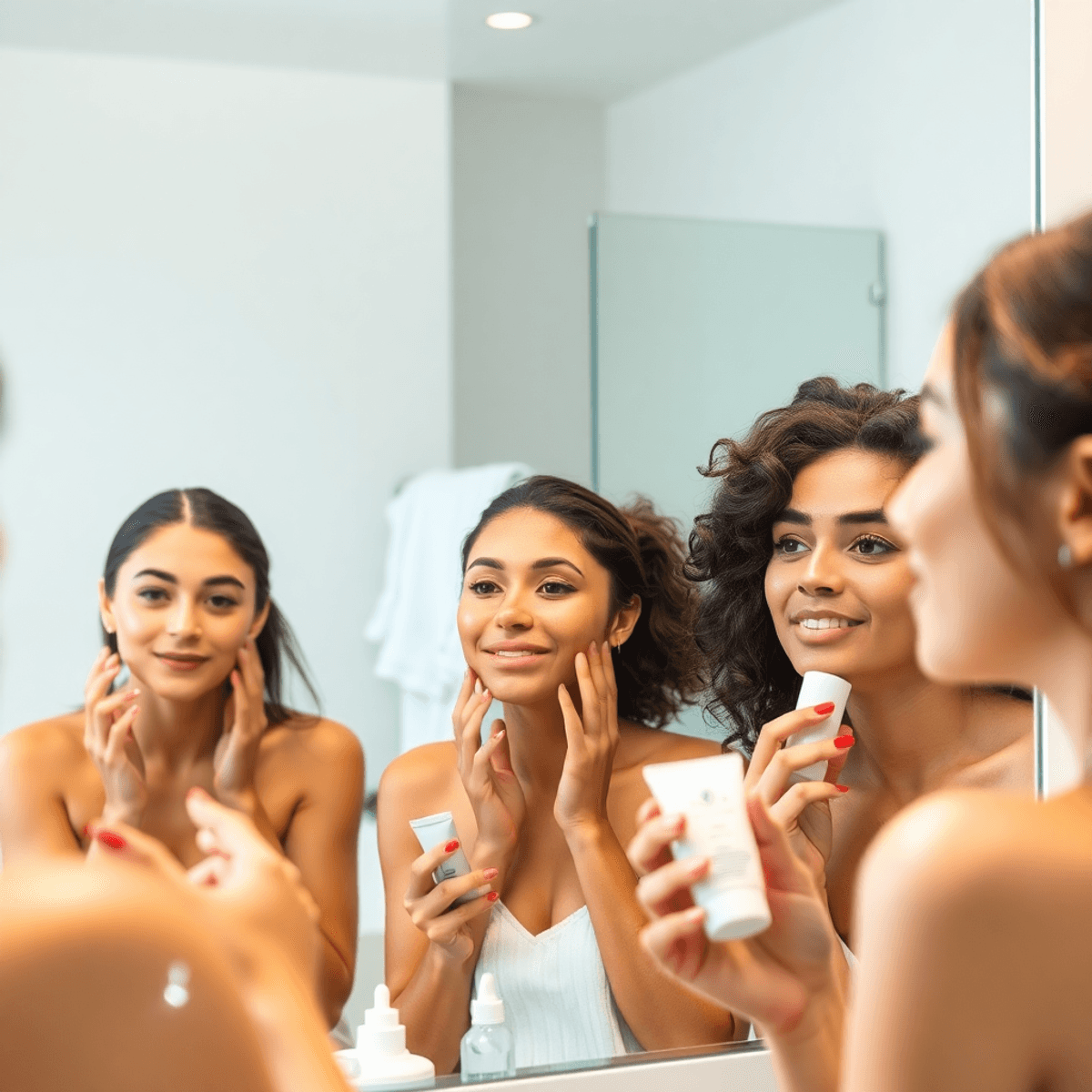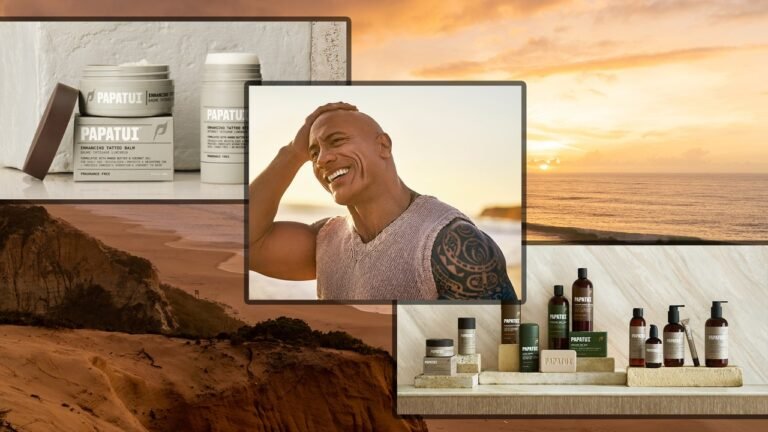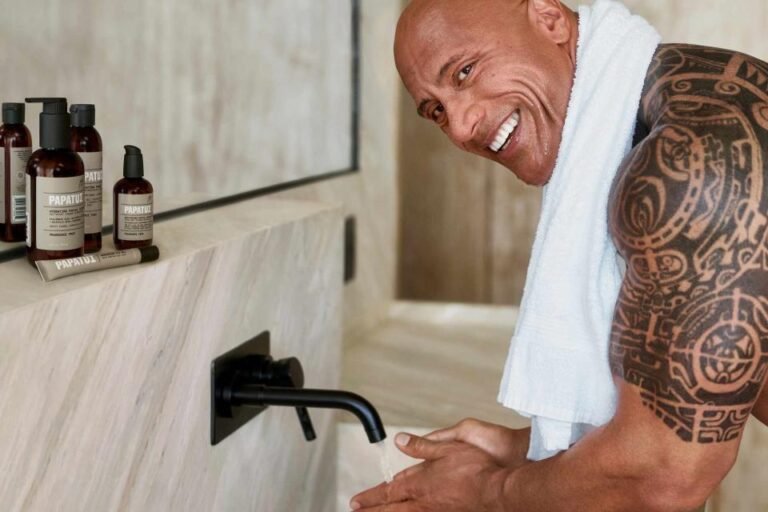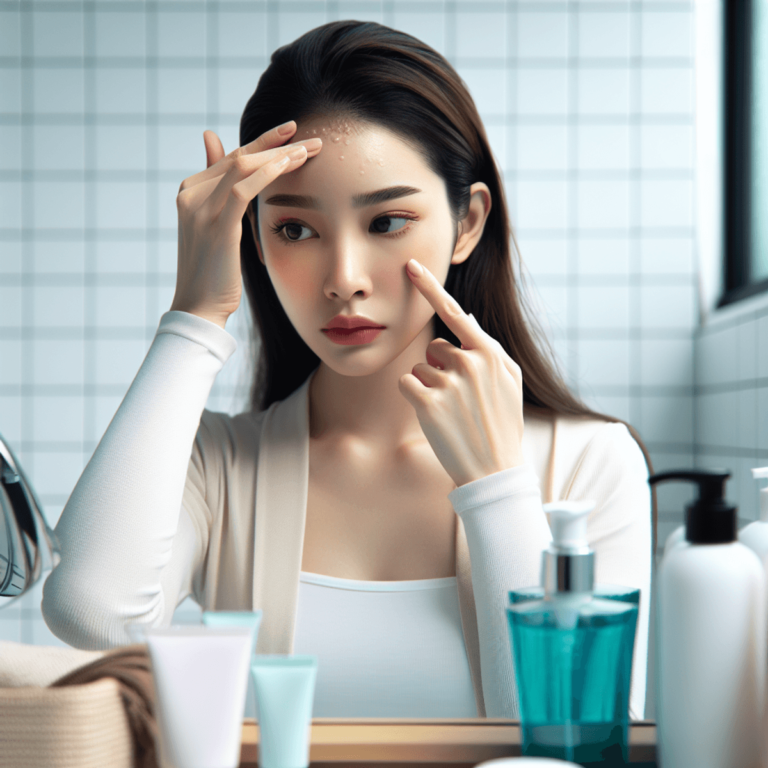best way to get rid of pimples

Introduction
Pimples can be really annoying, especially when they show up at the worst times. They can make you feel less confident and leave you searching for quick fixes. But you’re not alone in this struggle. Many people deal with skin issues every day, from small bumps on their foreheads to stubborn spots that take a long time to heal.
Pimples can have a bigger impact than just on your skin:
- They can lower your self-esteem
- Cause social anxiety
- Leave permanent marks if not treated properly
- Cause physical discomfort
The good news is that there are many effective ways to get rid of pimples. Whether you have occasional breakouts or persistent acne, knowing the right treatment methods can greatly improve the appearance of your skin.
In this guide, we’ll explore proven ways to eliminate pimples, including:
- Powerful topical treatments
- Natural home remedies
- Professional solutions
- Prevention strategies
- Long-term skin care practices
We’ll cover everything from small bumps on your face to more severe breakouts. You’ll learn about quick fixes for immediate relief as well as long-term solutions for lasting results. By the end of this article, you’ll have a clear understanding of how to achieve and maintain the clear, healthy skin you deserve.
Understanding Pimples
Pimples are localized skin inflammations that develop when hair follicles become clogged with oil, dead skin cells, and bacteria. These small, raised bumps can appear anywhere on your body, though they commonly affect the face, back, chest, buttocks, and scalp.
Common Types of Pimples:
- Whiteheads: Closed comedones that appear as small, flesh-colored bumps with white centers
- Blackheads: Open comedones with dark appearances due to oxidation when exposed to air
- Papules: Small, red, tender bumps without heads
- Pustules: Red, inflamed spots containing pus
- Nodules: Large, painful bumps deep under the skin
- Cystic Acne: Severe, deep-seated inflammations filled with pus
Key Factors Behind Pimple Formation:
- Hormonal Changes
- Puberty-related hormonal surges
- Menstrual cycle fluctuations
- Pregnancy hormones
- Stress-induced hormonal imbalances
- Excess Oil Production
- Overactive sebaceous glands
- Genetic predisposition to oily skin
- Environmental factors affecting oil production
- Bacterial Growth
- P. acnes bacteria multiplication
- Compromised skin barrier
- Poor hygiene practices
Location-Specific Characteristics:
Face pimples often result from touching your face, improper cleansing, or makeup residue. Scalp pimples typically develop from hair product buildup or excessive oil production. Buttocks pimples commonly occur due to tight clothing, sweat accumulation, or friction.
Contributing Lifestyle Factors:
- Diet high in refined sugars and dairy
- Dehydration
- Lack of sleep
- Excessive sweating without proper cleansing
- Use of pore-clogging skincare products
- Environmental pollution exposure
Understanding these fundamental aspects helps identify effective treatment approaches for different types of pimples and their specific locations on your body.
Effective Treatments for Pimples
Getting rid of pimples requires targeted treatments that address the root causes of acne. Here’s a detailed look at proven topical solutions that can help you achieve clearer skin.
Benzoyl Peroxide: Your Anti-Bacterial Ally
Benzoyl peroxide stands as a powerful weapon against acne-causing bacteria. This treatment works by:
- Killing P. acnes bacteria deep within pores
- Reducing inflammation and redness
- Helping prevent future breakouts
Concentration Guide:
- 2.5%: Ideal for sensitive skin, daily use
- 5%: Standard strength, balanced effectiveness
- 10%: Maximum strength for stubborn acne
Application Tips:
- Start with lower concentrations
- Apply a thin layer to affected areas
- Use at night to prevent sun sensitivity
- Expect results within 4-6 weeks of consistent use
Salicylic Acid: The Pore Unclogger
Salicylic acid penetrates deep into pores, making it highly effective for treating and preventing breakouts. This beta-hydroxy acid (BHA) delivers multiple benefits:
Key Benefits:
- Dissolves dead skin cells
- Reduces oil production
- Prevents pore blockages
- Minimizes inflammation
Usage Guidelines:
- Look for products with 0.5% to 2% concentration
- Apply twice daily after cleansing
- Can be used in combination with benzoyl peroxide
- Ideal for blackheads and whiteheads
Product Forms:
- Face washes
- Toners
- Spot treatments
- Pimple patches
These treatments work best when incorporated into a consistent skincare routine. Remember to patch test new products and introduce them gradually to avoid skin irritation. For optimal results, allow 4-8 weeks of regular use to see significant improvements in your skin’s condition.
2. Natural Remedies
Natural remedies offer a gentle approach to treating pimples without harsh chemicals. Tea tree oil stands out as a powerful natural solution, backed by scientific research for its antimicrobial properties.
Here’s how to use tea tree oil effectively:
- Dilution ratio: Mix 1-2 drops of tea tree oil with 12 drops of carrier oil (jojoba or coconut oil)
- Spot treatment: Apply the diluted mixture directly to pimples using a cotton swab
- Patch test first: Test on a small area of skin to check for sensitivity
Tea tree oil works through multiple mechanisms:
- Kills acne-causing bacteria
- Reduces inflammation and redness
- Helps regulate oil production
- Accelerates wound healing
Additional natural alternatives include:
- Aloe vera gel – Soothes inflammation and promotes healing
- Green tea extract – Reduces sebum production
- Honey – Natural antibacterial properties
- Apple cider vinegar – Balances skin pH levels
Application tips:
- Apply natural remedies after cleansing
- Use consistently for 4-6 weeks to see results
- Stop if irritation occurs
- Store solutions in dark, cool places
These natural solutions work best when integrated into a consistent skincare routine, paired with proper cleansing and moisturizing habits.
3. Immediate Solutions
When you need quick relief from painful, swollen pimples, these fast-acting solutions can help reduce inflammation and discomfort:
Ice Application Technique:
- Wrap an ice cube in a clean cloth
- Press against the affected area for 1-2 minutes
- Remove for 5 minutes
- Repeat up to 3 times per session
Ice therapy constricts blood vessels, reducing redness and swelling while numbing the area for immediate pain relief.
Hydrocortisone Cream Benefits:
- Reduces inflammation within hours
- Decreases redness and irritation
- Available over-the-counter in 1% strength
- Safe for spot treatment use
Apply a thin layer of 1% hydrocortisone cream directly to inflamed pimples. This steroid-based treatment calms angry breakouts and provides quick relief from itching and discomfort.
Application Tips:
- Clean the affected area before treatment
- Use gentle, patting motions – avoid rubbing
- Apply treatments at night for maximum effectiveness
- Don’t exceed recommended usage times
These solutions work best when used at the first sign of inflammation. You’ll notice reduced swelling and redness within a few hours of application.
Advanced Treatments and Professional Help with Pimples
When over-the-counter treatments don’t deliver results, professional interventions can provide rapid relief. Cortisone injections stand out as a powerful solution for stubborn, inflamed pimples.
These injections work by:
- Reducing inflammation within 24-48 hours
- Shrinking large, painful cysts
- Minimizing the risk of scarring
- Providing relief from deep, painful acne
A dermatologist injects a diluted corticosteroid directly into the inflamed pimple. The procedure takes just minutes, and you’ll notice visible improvement within a day. The treatment costs $50-$100 per injection.
Key considerations for cortisone shots:
- Best suited for occasional, large pimples
- Not recommended for regular, small breakouts
- May cause temporary skin depression
- Requires professional administration
Your dermatologist might combine cortisone injections with other treatments like:
- Prescription-strength topicals
- Oral medications
- Chemical peels
- Light therapy
The right treatment plan depends on your skin type, acne severity, and medical history. A board-certified dermatologist can create a customized approach for your specific needs.
Home Care Strategies to Manage Pimples Effectively
A consistent at-home skincare routine forms the foundation of clear, healthy skin. You’ll need to establish a gentle cleansing routine twice daily using lukewarm water and a cleanser specifically formulated for your skin type.
Essential Daily Routine Steps:
- Cleanse your face in the morning and before bedtime
- Pat dry with a clean towel – never rub
- Apply treatments while skin is slightly damp
- Use non-comedogenic moisturizer
Your makeup choices play a crucial role in preventing breakouts. Select products labeled “non-comedogenic” or “oil-free” to avoid clogging your pores. These products allow your skin to breathe while providing coverage.
Smart Makeup Practices:
- Remove all makeup before bed
- Clean makeup brushes weekly
- Replace expired products promptly
- Consider mineral-based foundations
Creating a dedicated space for your skincare routine helps maintain consistency. Keep your products organized and easily accessible. A clean environment reduces the risk of bacterial contamination that can worsen breakouts.
Daily Habits That Support Clear Skin:
- Change pillowcases twice weekly
- Keep hair clean and away from face
- Avoid touching face throughout day
- Stay hydrated with water intake
- Use clean towels for face-drying
Remember to patch test new products on a small area of skin before full application. This practice helps identify potential irritants that could trigger breakouts.
Preventative Measures Against Pimples
A strategic approach to preventing pimples starts with a consistent skincare routine. Your daily regimen should include:
- Double-cleansing method: Use an oil-based cleanser followed by a water-based cleanser
- Weekly exfoliation: Incorporate chemical exfoliants like AHA/BHA
- Hydration: Apply lightweight, non-comedogenic moisturizers
- Sun protection: Use broad-spectrum SPF 30+ daily
Your lifestyle choices play a crucial role in maintaining clear skin. Research suggests specific dietary modifications can reduce pimple formation:
- Foods to limit:
- High-glycemic foods
- Dairy products
- Processed snacks
- Sugary beverages
- Skin-friendly foods:
- Omega-3 rich fish
- Green leafy vegetables
- Antioxidant-rich berries
- Zinc-containing nuts
Additional preventative practices include:
- Changing pillowcases twice weekly
- Using clean towels for face-drying
- Sanitizing phone screens regularly
- Keeping hair products away from facial skin
- Staying hydrated with 8-10 glasses of water daily
Stress management techniques can help prevent hormone-related breakouts:
- Regular exercise
- Adequate sleep (7-9 hours)
- Meditation or mindfulness practices
- Deep breathing exercises
These preventative measures work best when combined with appropriate skincare products. Consider incorporating products with niacinamide or azelaic acid into your routine for added protection against future breakouts.
Managing Breakouts When They Occur
Sudden breakouts demand swift action – but resist the urge to pop those pimples. Here’s your action plan for managing unexpected acne flare-ups:
Immediate Steps
- Apply a cold compress for 1-2 minutes to reduce inflammation
- Clean the affected area with a gentle, non-comedogenic cleanser
- Pat dry with a clean towel – never rub
Spot Treatment Options
- Pimple patches: Apply hydrocolloid patches overnight to absorb excess fluid
- Targeted creams: Use products containing benzoyl peroxide or salicylic acid directly on spots
- LED light devices: Blue light therapy can help kill acne-causing bacteria
Dark Spots and Bumps
- Use vitamin C serums to fade post-breakout marks
- Apply niacinamide-based products to regulate oil production
- Consider alpha-arbutin treatments for stubborn hyperpigmentation
Body Breakouts
- Wear loose, breathable clothing
- Shower immediately after sweating
- Use body washes containing salicylic acid
Red Flags
- Deep, painful cysts require professional attention
- Multiple breakouts in unusual locations might indicate hormonal issues
- Severe inflammation or fever could signal infection
Remember to document your breakouts – tracking patterns helps identify triggers and prevent future flare-ups. Keep your hands away from your face and maintain a consistent treatment approach for at least 2-3 weeks before switching methods.
Long-term Solutions for Pimple Scars and Marks After Treating Active Acne
Pimple scars require dedicated treatment approaches distinct from active breakout management. Your path to scar-free skin includes several effective options:
Topical Treatments
- Vitamin C serums brighten dark spots and stimulate collagen production
- Retinoids help rebuild skin texture and fade discoloration
- Alpha hydroxy acids (AHAs) promote cell turnover and minimize scarring
- Niacinamide reduces redness and improves skin barrier function
Professional Procedures
- Chemical peels remove damaged skin layers
- Microneedling creates controlled micro-injuries to boost collagen
- Laser therapy targets specific scar types and depths
- Dermal fillers restore volume in depressed scars
Natural Solutions
- Rosehip oil contains vitamin A and essential fatty acids
- Aloe vera gel promotes healing and reduces inflammation
- Honey provides antibacterial properties and moisture retention
The healing timeline varies based on:
- Scar depth and type
- Chosen treatment method
- Individual skin type
- Consistency in treatment
Your skin needs time to regenerate – expect visible improvements within 3-6 months of consistent treatment. Protection from sun exposure remains crucial during the healing process, as UV rays can darken scars and slow recovery.
For optimal results, combine multiple treatment approaches under professional guidance. A dermatologist can create a personalized scar treatment plan based on your specific scar types and skin concerns.
Recommended Products for Clearer Skin at All Stages of the Acne Journey
Your journey to clear skin requires effective products that target specific concerns. Here’s a curated list of proven solutions for different skin issues:
Pimple Patches for Spot Treatment
- Hero Mighty Patch Original – These hydrocolloid patches extract pus and fluid while protecting the area from bacteria
- Starface Hydro-Stars – Fun, star-shaped patches that blend seamlessly into your skincare routine
- COSRX Acne Pimple Master Patch – Ultra-thin patches perfect for daytime wear
Face Washes for Different Skin Types
- For Oily Skin: CeraVe Foaming Facial Cleanser with ceramides and niacinamide
- For Sensitive Skin: La Roche-Posay Effaclar Medicated Gel Cleanser
- For Combination Skin: Neutrogena Oil-Free Acne Wash
Specialized Treatments
- Dark Spot Solutions: The Ordinary Alpha Arbutin 2% + HA targets post-inflammatory hyperpigmentation
- Forehead Bumps: Paula’s Choice 2% BHA Liquid Exfoliant unclogs pores effectively
- Keratosis Pilaris (arm bumps): AmLactin Daily Moisturizing Body Lotion with 12% lactic acid
Prevention Products
- Oil Control: Innisfree No Sebum Mineral Powder
- Gentle Exfoliation: First Aid Beauty KP Bump Eraser Body Scrub
- Barrier Protection: Vanicream Moisturizing Cream
Pro Tips for Product Use
- Apply pimple patches on clean, dry skin
- Leave patches on for at least 6 hours
- Use gentle cleansers twice daily
- Introduce new products gradually to avoid irritation
- Pair active ingredients with soothing moisturizers
These products work best when used consistently as part of a comprehensive skincare routine. Each person’s skin responds differently to treatments,
Conclusion: Embracing a Comprehensive Approach to Skincare Beyond Just Treating Pimples
Getting rid of pimples requires more than spot treatments and quick fixes. A successful skincare journey combines multiple strategies:
- Prevention First: Establish a consistent cleansing routine with gentle, non-comedogenic products
- Active Treatment: Use targeted solutions like benzoyl peroxide or salicylic acid for existing breakouts
- Post-Care Management: Address scarring and hyperpigmentation with vitamin C serums and retinoids
- Lifestyle Integration: Balance your skincare with proper nutrition, stress management, and adequate sleep
Your skin deserves patience and dedication. Start with patch testing new products, document your skin’s reactions, and adjust your routine accordingly. Remember that different skin types respond uniquely to treatments – what works for others might not work for you.
Consider consulting a dermatologist for personalized advice, especially for persistent cystic acne or severe scarring. They can recommend professional treatments like chemical peels or laser therapy when needed.
The path to clear skin isn’t always linear. Some days might bring unexpected breakouts, while others showcase your skin’s natural glow. Stay committed to your comprehensive skincare approach, and you’ll develop a sustainable routine that supports your skin’s long-term health and appearance.
Your skin is unique – treat it with care, consistency, and understanding.
FAQs (Frequently Asked Questions)
What are the common causes of pimples?
Pimples can be caused by a variety of factors including hormonal changes, excess oil production, bacteria, and clogged pores. Understanding these causes is essential for effective treatment.
What are some effective home remedies for treating pimples?
Home remedies for pimples include using tea tree oil due to its anti-inflammatory properties, applying ice to reduce swelling, and using natural ingredients like honey and aloe vera to soothe the skin.
How can I prevent pimples from forming?
Preventing pimples involves maintaining a consistent skincare routine, using non-comedogenic products, keeping your skin clean, avoiding touching your face, and managing stress levels.
What is the best type of face wash for acne-prone skin?
The best face washes for acne-prone skin typically contain active ingredients like salicylic acid or benzoyl peroxide, which help unclog pores and reduce inflammation.
How can I get rid of pimple scars naturally?
Natural methods for removing pimple scars include using lemon juice for its natural bleaching properties, applying aloe vera gel to soothe the skin, and utilizing honey as a moisturizer with healing benefits.
When should I seek professional help for my acne?
You should consider seeking professional help if over-the-counter treatments are ineffective after several weeks, if you have severe acne that affects your daily life, or if you experience painful cystic acne.










